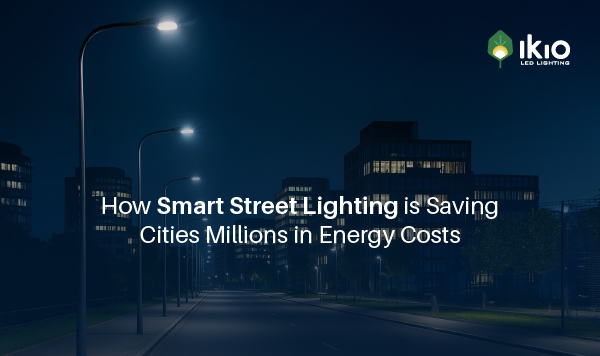
Our cities are constantly evolving, striving for greater sustainability and an improved quality of life. A quiet revolution is transforming urban lighting systems, which are now cutting energy costs, enhancing safety, and paving the way for smarter environments. In Copenhagen, smart street lighting demonstrates the significant impact of this shift.
Street lighting is considered an important service in the context of illuminating our roads and increasing safety. Traditionally, it has represented a significant part of a city's energy consumption, along with the area of the budget. Witnessing outdoor urban lighting costs around 20-40% of municipal expenditure. The advent of smart and efficient street lighting has been taken by companies like IKIO, which are willing to change this whole perspective. By incorporating advanced LED technology with smart and intelligent controls, these systems will provide a sustainable and economical solution to this specific urban challenge.
Smart street lighting goes beyond the idea of easy on/off functionality. It tends to include the integration of energy-efficient LED with a communication system. Due to this, real-time monitoring and remote management have become an easy task. Unlike traditional sources of lighting, which operate at their highest power regardless of requirement, smart streetlighting can be easily dimmed, brightened, or even turned off. This level of control is happening with the help of sensors and data analytics.
The zest towards smart streetlighting is fueled due to several factors:
Cost of Energy: With the increase in global energy prices, cities have come under pressure. They are trying to reduce operational expenditure. The less efficient lighting technologies, such as high-pressure sodium lamps, are seen to lead to higher electricity bills.
Environmental Imperatives: All the cities around the world are committed to reducing their carbon footprint, along with fighting climate change. Energy-efficient lighting contributes to reducing greenhouse gas emissions linked with the generation of electricity.
Old Infrastructure: It is seen that a huge part of urban lighting systems is old and needs proper and significant maintenance. LED systems provide an opportunity to renew infrastructure and lower maintenance costs.
Smart street lighting can cut city energy costs by 50-70%, as seen in Copenhagen’s ~$2 million annual savings. Cities replacing high-pressure sodium lamps with LED fixtures are achieving substantial energy savings and millions of dollars in annual cost reductions.
Less Carbon Emissions: For sure, lower energy consumption directly translates to a smaller carbon footprint. It directly helps cities to meet their targets.
Improved Safety and Security: The Smart LED lighting system can be adjusted to ensure optimal illumination. It is where and when it's required most. This will enhance the quality of visibility for pedestrians, directly helping in reducing the rate of accidents.
Increased Lifespan and Lower Maintenance: No doubt in saying that LED lights have a longer lifespan in comparison to traditional bulbs. It will reduce the frequency of replacements.
Working as a big force in the smart streetlighting sector, IKIO tends to deliver innovative and efficient solutions. All the advanced LED smart lighting fixtures are a combination of intelligent control systems and are designed in a way to increase energy efficiency. They are committed to contributing their share to making a sustainable future.
The Robus Cobra Head Street Light of IKIO delivers high efficacy (up to 162 lm/W) and precision optics for uniform illumination. The external drivers of the light are contributing to maintenance and include dynamic color-changing and glare-control features. With IKIO, cities can embark on their way to smart street lighting journey.
The whole transition to smart and motion detection lights is no longer an unknown concept, but it's a proven strategy. By using smart streetlighting, cities will not only cut their energy costs but will also be able to increase the level of safety of their citizens. They will be on the path of reducing environmental issues and will lay the ground for a smart urban future. The journey to brighter, more sustainable, and cost-effective cities is being accomplished with smart lighting.
How does smart street lighting save energy?
Smart street lighting saves energy with the use of efficient LEDs and controls. The motion sensors enable lights to adjust output on the basis of need. Through this, the wastage of electricity is avoided, significantly reducing the rate of electricity consumption.
What are the major advantages of LED smart street lighting for cities?
Several significant advantages are offered by smart street lighting for cities. It includes the feature of energy savings and lower maintenance costs. Also, it increases public safety by giving a better range of visibility.
How to make a smart streetlight?
In context, to make smart street lights use components such as LED lights, sensors, microcontrollers, and other modules. Program them so that they can detect environmental changes.
Does IKIO have efficient smart street lighting?
Yes, IKIO offers smart and efficient street lighting solutions. Robus is one of the products that is designed for energy savings. It delivers robust performance in harsh situations along with smart control options.